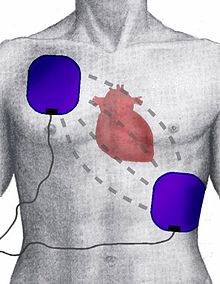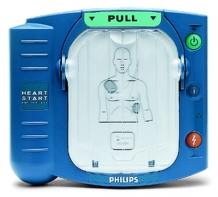Blog Roll: (Contributors)
» Hulet Smith, OT
» Megan Smith, PT
» Mike Price, OT
Topics:
Adaptive Devices
Adult Tricycles
Air Purifier
Allergy
Alternative Communication Devices
Alzheimer's Dementia Products
Aquatic Products
Arthritis Relief Products
Autism
Back Relief
Ball Pit/Pool
Bariatric
Bath Benches
Bathtub Lift
Bed Rails
Bedsores / Decubitus
Bidet
Body Solid Exercise Products
Breast Feeding Products
Bushel Trucks
Cancer
Catheters
CEU
Changing Bench
Child Car Seats
Child Care Products
Christmas Gifts
Clinic/Medical Equipment
Clinical Furniture
Cold and Flu
Communication Devices
Compression Garments
Computer Products
CPAP
Crutches
Daily Assistance Products
Daylight Lamps
Dental Care
Diabetes
Doctor's Office
Dysphagia
Electrodes
Electrolarynx
Emergency Preparedness
Ergonomic Equipment
Exam Tables
Exercise Products
Eyecare
Family Tricycles
First Aid Kits
Floor Scales
Fluidotherapy
Foot Drop
Foul Weather Gear
Furniture
Gait Trainers
General Articles
General Posts
Glassless Mirrors
Hand Sanitizer
Head Protection Helmets
Hearing Impaired
Heart Health
Heating Pad
Hip Fractures
Home Assistance Products
Home/Office Assistance
Hospital Beds
Hoyer Lifts
Hyperbaric chamber
Hyperthermia/Hypothermia
Ice/Hydration Carts
Impotence Products
Incontinence Products
Infection Control Gowns
Inspirational Stories
Lift Chairs
Light Therapy
Low Vision Products
Massage Tables & Chairs
Massage Units
Maternity
Medical Facility Products
Medical Scales
Multi-Sensory Environment
Natural Healing
Nebulizers
Non-Hospital Bedding
Nutritional Supplements
Office Furniture
One-Handed Products
Operating Room Devices
Ostomy Products
Oxygen Compressors
Oxygen Concentrator
Oxygen/Nebulizer Masks
Pain Relief
Paraffin Unit
Patient Lift
Patient Lifts
Patient Restraints
Patient Transfer Systems
Pediatric Bath Chairs
Pediatric Furniture
Pediatric Learning
Pediatric Recreation
Personal Listening Devices
Personal Warming Products
Physical Therapy
Pill Organizers
Pillows
Playground Equipment
Pool Lifts
Press Releases
Procedure Chairs
Pulse Oximeter
Reading Assistance
Reference Materials
Rehab Equipment
Rehabmart News
Rehabmart Newsletter
Respiratory Health
Rollators
Saunas
Scooters
Seniors
Shower Chairs
Shower Commode Chairs
Shower Gurney
Showers Chairs
Side Access Bathtubs
Skin Tear
Special Needs Dinnerware
Special Needs Seating
Special Report Articles
Splints
Sport Injuries
Standers
Staying Home
Stethoscopes
Stimulus Reward Toys
Stress Relief
Stroke
Strollers
Summertime Products and Summertime Fun
Talking Products
Therapy Balls
TheraTogs
Thermometers
Traction Devices & Tables
Treatment Tables
Ultrasound
Vibroacoustic Therapy
Vision Products
Walk-In Bathtub
Walking Aids
Walking Boot
Weighted Wearables
Wheelchair Accessories
Wheelchair Cushions
Wheelchair Lifts
Wheelchair Ramps
Wheelchair Transfer Systems
Wheelchairs
Women's Health
Work Hardening Products
Wound Care
Save the Life of a Loved One at Home with a Home Defibrillator
Rehabmart offers many different types of defibrillators at discount prices. Visit our defibrillators page to view the different products we have to offer!

September is National Atrial Fibrillation Awareness Month.
Heart palpitations can be caused by mild anxiety or can be a symptom of a life-threatening disease. Atrial fibrillation impacts more than 5.1 million people in the United States and is expected to affect 15.9 million people by the year 2050.
Called "afib," atrial fibrillation is characterized by heart palpitations, dizziness and shortness of breath. If not treated, it can lead to stroke, heart failure, Alzheimer's disease and can double your risk of death. The disease is caused by a malfunction in the heart's electrical system and is the most common heart irregularity. People who have been diagnosed with atrial fibrillation describe symptoms such as erratic heartbeats, strong heart palpitations or a rapid heart rate. In addition, they may experience skipped heartbeats; fluttering, butterflies or a flopping feeling in the chest; chest and throat pressure that mimics a heart attack; or constriction about the left bicep.
Often, the disease leaves people feeling dizzy, faint, light-headed, anxious, breathless, weak or exhausted. The symptoms may continue for hours, days, weeks, months or even years. While the exact cause of atrial fibrillation is unknown, there are many risk factors that include people with coronary heart disease, valve disease, clogged arteries, chest pain or an inflamed heart muscle or lining along with those who have congestive heart failure or have had a heart attack or recent heart surgery.
The most common treatment for atrial fibrillation is electrical cardioversion, a process by which the heart is shocked to convert it from an irregular rhythm back into a normal rhythm. The procedure is used early for patients with persistent atrial fibrillation and later for afib patients whose medication has stopped working.
Electrical cardioversion does not cure afibrillation and often requires multiple tries to get the heart back to its normal rhythm. Rehabmart offers four devices that are used for automated defibrillation: Easibeat Defibrillator Pads, Samaritan PAD Defibrillator, HeartStart OnSite Defibrillator and HeartStart Home Defibrillator.

The Easibeat Defibrillator Pads are designed for external defibrillation, noninvasive monitoring and synchronized cardioversion. The pads adhere well to the skin and are used for adult patients or children over eight years old who weigh more than 55 pounds. There are several different connector types that are available to connect the Easibeat Defibrillator Pads to different defibrillator models.


Both designed for the ordinary person to use, the HeartStart OnSite Defibrillator and the HeartStart Home Defibrillator are similar devices. Each is available without a prescription and weighs just 3.3 pounds. The devices offer voice instructions that guide the user through each step of defibrillation. They remind you to call emergency medical services (EMS) and provide on-demand CPR coaching. The HeartStart OnSites Quick Shock feature delivers therapy in just eight seconds after chest compressions. Known as a world leader in automated external defibrillators, more than 40 studies confirm their effectiveness.
Medical Consumer Writer
and
Hulet Smith, OT
